What's New: Setting up your first Google Ads campaign
(from the latest issue of the Indie Hackers newsletter)
Looking to get your first Google Ad campaign up and running?
- This no-fluff guide can help. To write a clickable headline, focus on desired outcomes for your users, use strong keywords, and handle objections.
- Context switching is adjacent to multitasking, and it comes with a cognitive cost. Avoid it by setting priorities and making time for non-essential tasks.
- $2.3K MRR from building a SaaS around a simple solution. Tamir Bashkin found a unique problem burdening support teams, and built quickly.
Want your product seen by over 85,000 founders and businesses? Sponsor an issue of the Indie Hackers newsletter. Choose between 3 affordable tiers that can fit almost any budget.
Creating Your First Google Ads Campaign 🛠️

by Arunima
Follow these steps to successfully run your first campaign, even if you’re not a marketer!
1. Create your Google Ads account
This is free, and pretty simple to do.
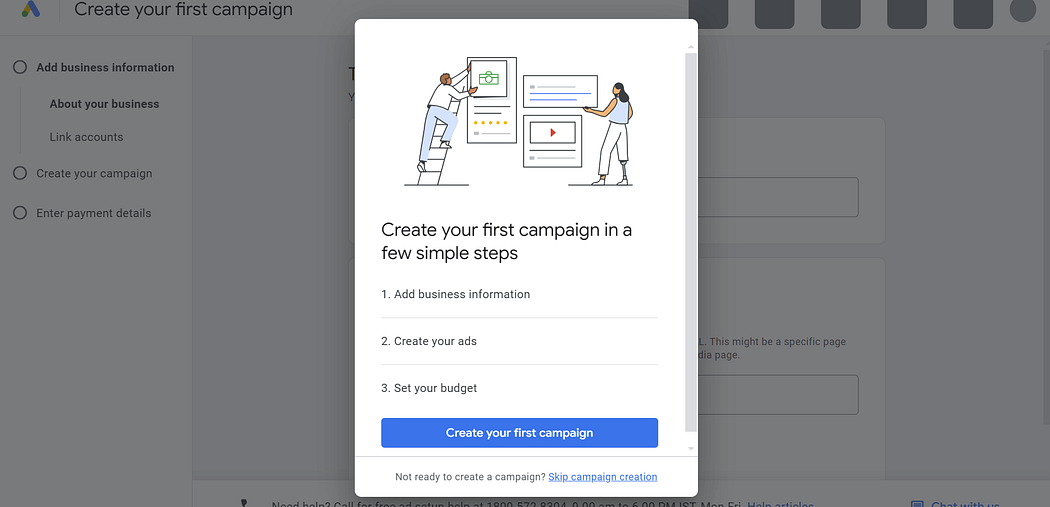
Once you are done, click on “Skip Campaign Creation.” Instead, go to this dashboard.
2. Create a campaign
At the top left corner, you will see a "+" sign. Click on that, and click “Create.”
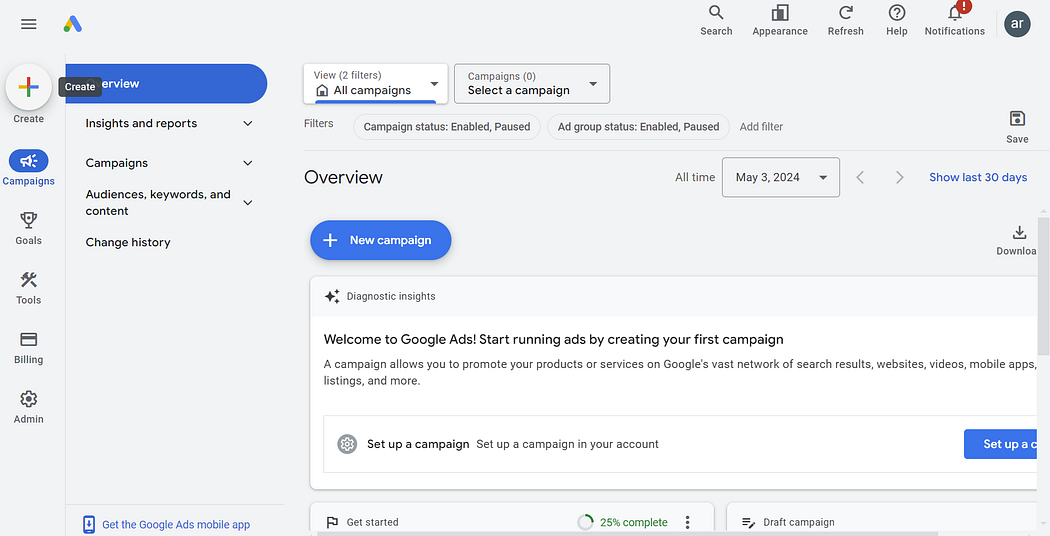
If you do not have Google Analytics turned on, it will ask for some details about your business. Then, it will ask about your goal for the campaign.
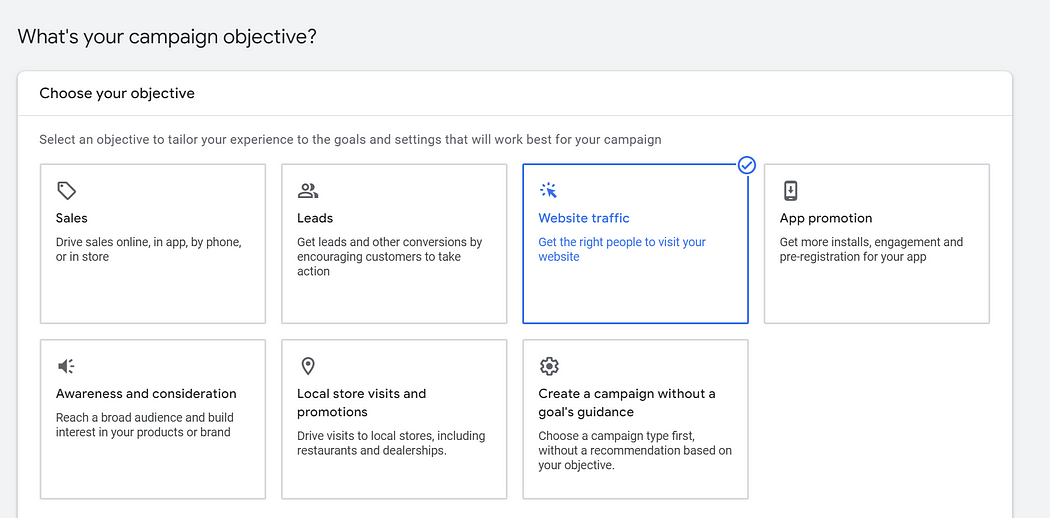
From here, choose the campaign objective!
3. Track conversions
To add tracking, go to Goals > Summary > Conversion goals.
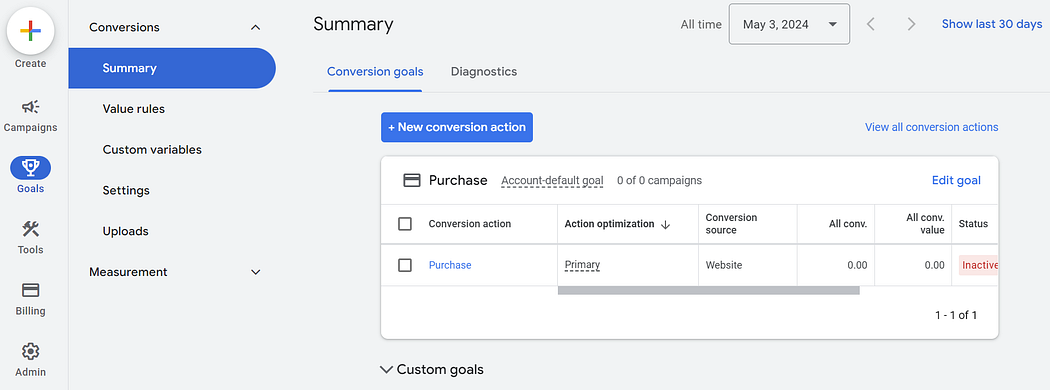
If you're stuck, check out this page. It's pretty straightforward. After you’ve added your conversion goals, it will look like this:
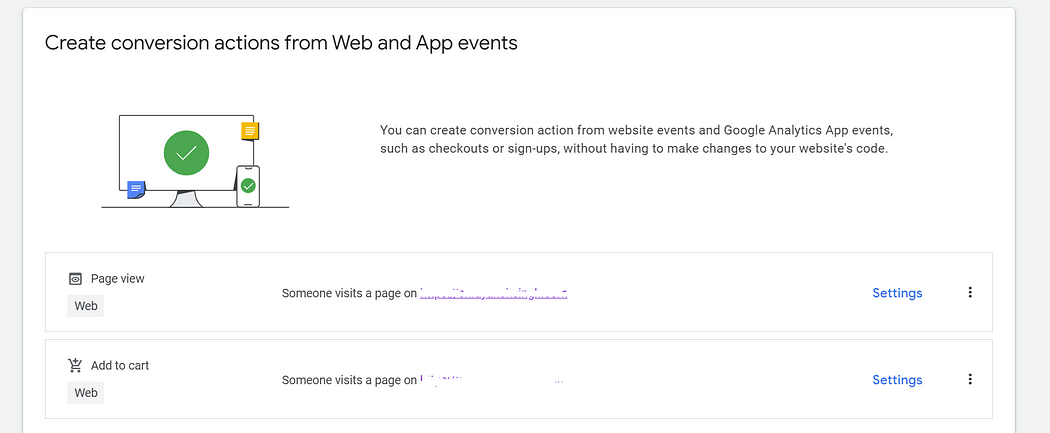
4. Select a campaign type
The campaign type will determine where and how your ad will be placed.
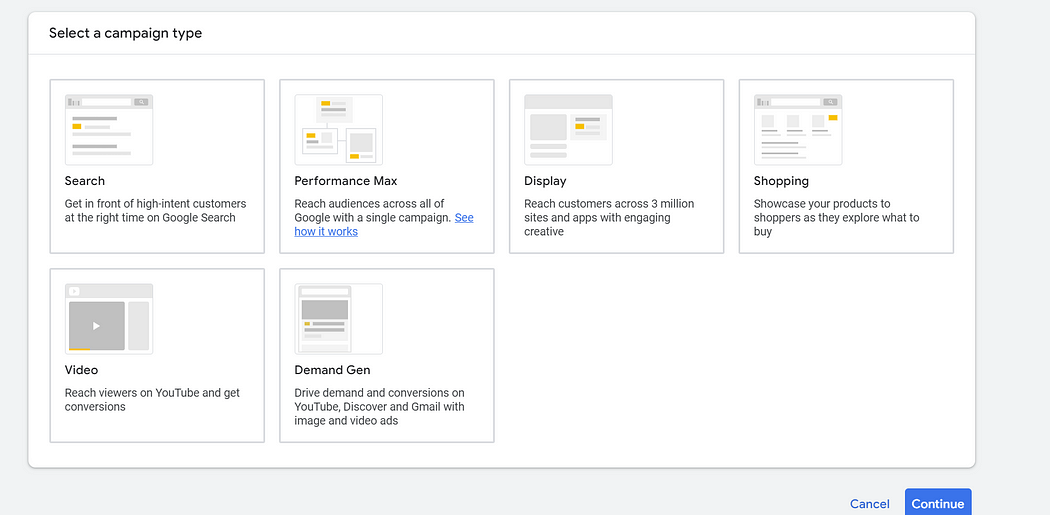
This is a simple overview of the different types of campaigns, and what you can use them for:
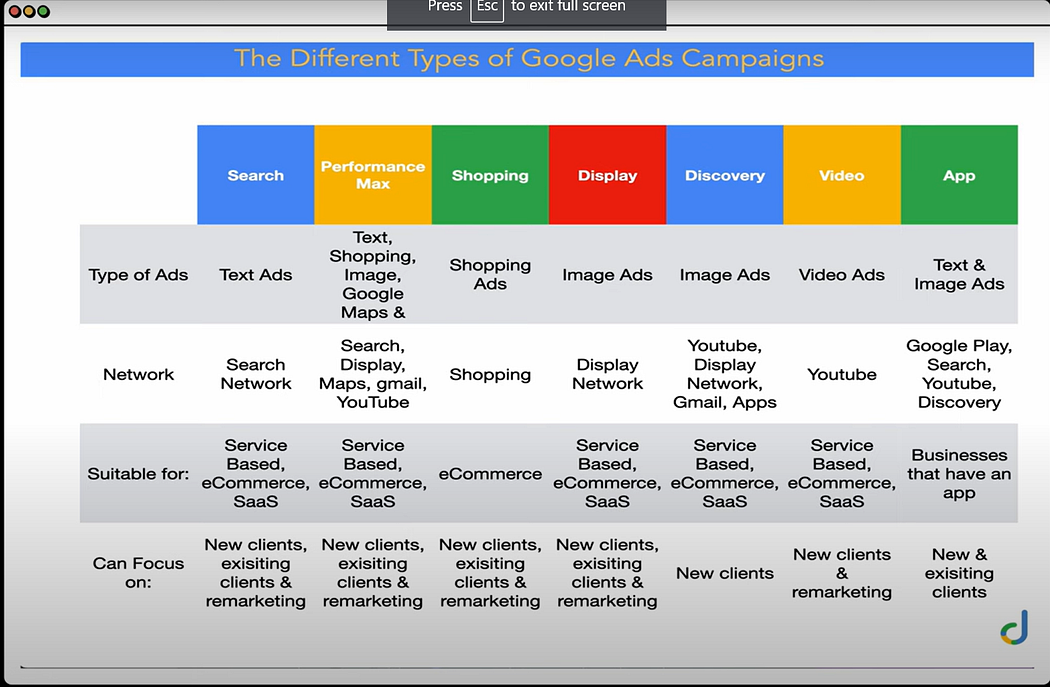
Aaron Young is a great resource to gain deeper insight on running Google Ads.
5. Bidding
Google recommends that you focus on conversions. Let’s say you have two products, one at $10 and one at $80. The “Conversion” option would make Google push both equally, while “Conversion Value” would make Google push the option where you make more money. So, it would push the $80 option more.

After you’ve chosen, you will see “Set a Target Cost Per Action.” Cost per action is simply how much you want to spend to get someone to do something online. For instance, for every $100 you spend, you want to make $300.
You can also skip this option entirely if you are just starting out. It is recommended that you first run a campaign for a month on the default setting, check how much money you make compared to your ad spend, and then see which rate suits you best.
6. Keywords and ads
This is the bulk of the process. The first is the keyword. These are words or phrases that users type into Google when they’re looking for something, and if they match the keywords that you have chosen, your ads have a chance to show up.
You want to choose the relevant words that most people search for: The words that have high search volume. You can check this with Keyword Planner by Google.
Try to find keywords related to your business that have good searches, but try not to use keywords with millions of hits. They will probably have a lot of people fighting for ad space.
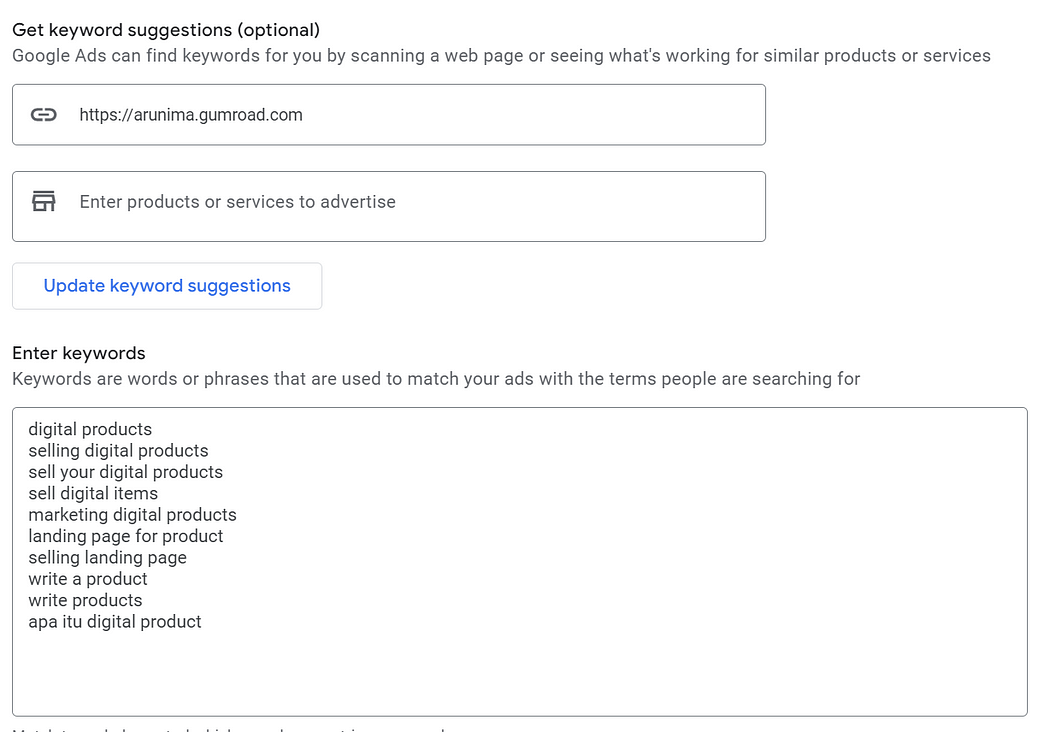
The next part is your ad, which consists of two parts: Headline and description.
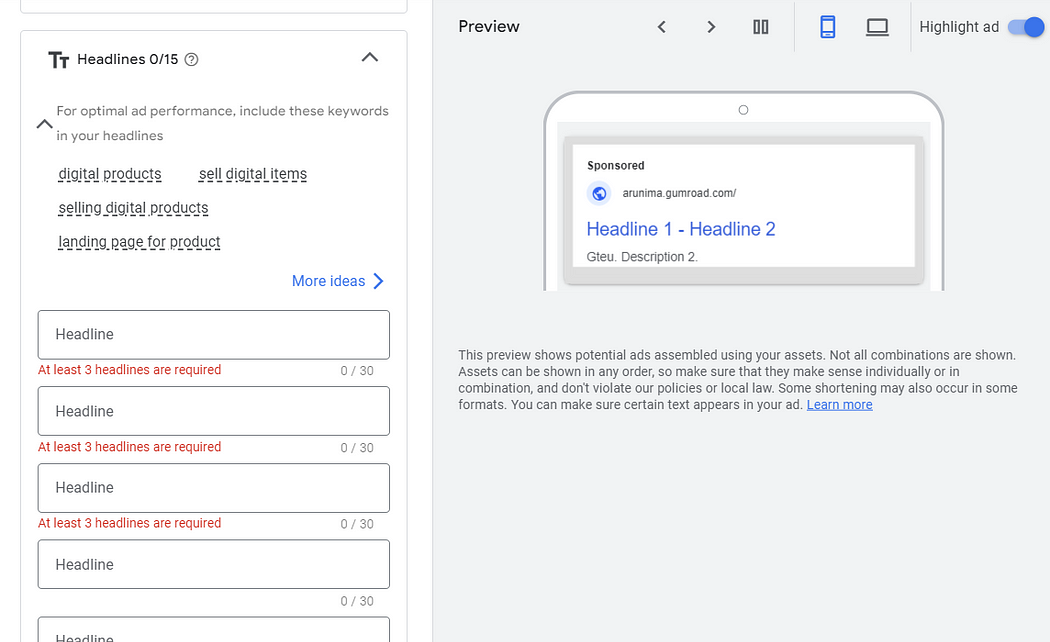
You will also see an ad strength indicator with some recommendations. Go through them, and try to stick to it.
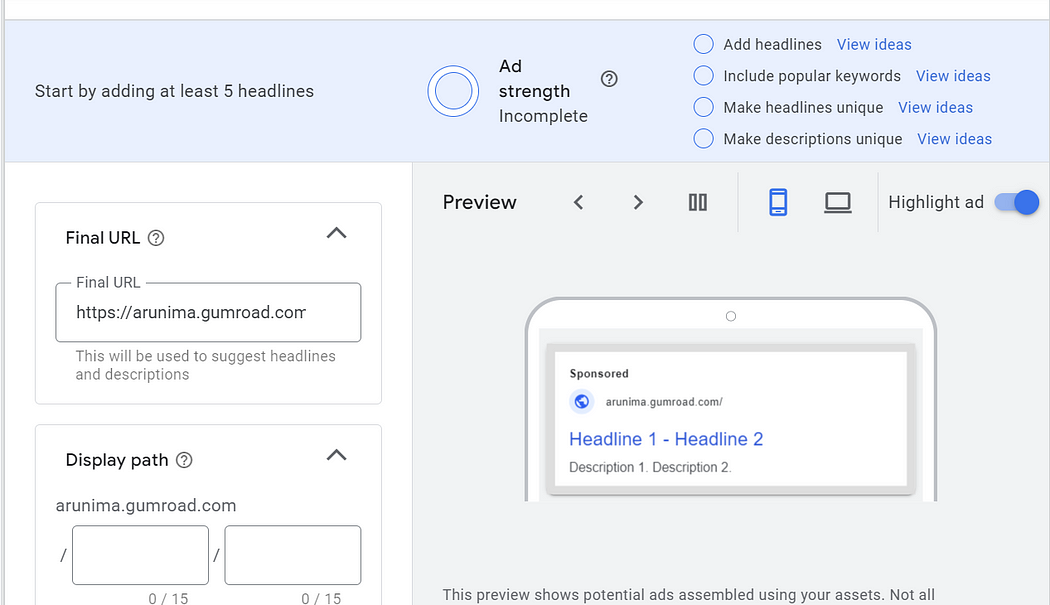
Touch on these points to write a clickable headline:
- Desired outcome.
- Keywords.
- Objections.
Make sure the headlines stand out individually, too. They might show up in different combinations on your ad. As for the ad description, you want to include:
- Social proof.
- What your product does.
- CTA.
Example: “Over 10K users! Save your time by automating your social media content. Try Hypefury for FREE!”
Sprinkle in your keywords, and you’re set.
6. Budget
When you're just starting out, keep it low.
Give it time to understand the analytics and experiment with ad copy. Remember, ads need a lot of tests. You probably won’t get thousands of sales in the first go, but they work well once you know the sweet spots!
Discuss this story.
In the News 📰

from the Growth Trends newsletter
🔎 Google is redesigning its search engine.
🤖 What if the AI revolution doesn't happen?
💲 Link to your product here. Our most affordable ad.
💻 Here's how to promote your content online.
💵 Pro tips for cross-selling.
🥰 How to lead while staying true to yourself.
Check out Growth Trends for more curated news items focused on user acquisition and new product ideas.
Avoid Context Switching ❌

The ability to multitask and switch between different projects quickly is often seen as a valuable characteristic. The dark reality, however, is that regularly shifting between tasks, a tactic known as context switching, decreases productivity.
Context switching 101
Context switching is when you shift focus from one task to another. Each context switch comes with a cognitive cost, which leads to a longer task completion time, a higher probability of errors, and lower overall productivity.

Besides lost productivity, some individuals could also experience increased mental fatigue and reduced creativity from context switching regularly.
Strategies to prevent context switching
-
Identify: You have to first understand what’s causing it, and understand when you are most likely to switch between tasks. Take a day or two to write down every time you switch between certain tasks.
-
Setting priorities: Identify which tasks you should complete first.
-
Setting aside time for non-essential tasks: Instead of letting yourself be interrupted every 10-15 minutes, set specific time slots for non-essential tasks, like checking Slack, emailing, or scrolling social media. This will minimize the amount of context switches in the workday.
-
Do Not Disturb: Do Not Disturb should become your favorite Slack and phone function.
-
Productivity tools: Leverage technology to significantly boost your productivity. For example, our tool RivalSense can reduce the time you spend on competitor monitoring by sending you weekly curated updates.
-
No-meeting days: Implement no-meeting days to fully focus on the tasks at hand.

Discuss this story.
Harry's Growth Tip 🧠
from the Marketing Examples newsletter
Effective comparisons can help cut through the noise.

Subscribe to Marketing Examples for more short, sweet, practical marketing tips.
Lessening the Load on Customer Support 🤩

Back in 2021, I used to set up automation solutions for clients in the customer support space. Lots of them had the same problem, which led to the idea for my tool.
The problem
Let's say you are the proud owner of an e-commerce shoe store, and you have a client named Chad. Chad reaches out to your support team because he got the wrong size in sneakers.
A member of your support team helps Chad return the shoes and get them in a different size. A few hours pass, and the guy from your team successfully marks Chad's ticket in the CRM system as "closed."
Chad writes back: "Thank you so much, guys. I really appreciate the help, and I just love your sneakers!"
Chad doesn't know that he just created extra work for the team. He just popped his message back up to their queue, and his gratitude gave them a heavier load.
The idea
This problem inspired me to create Thank You GPT.
I started to list the various expressions of gratitude that people tend to send in. When my tool detected a form of "Thank you!" in the closed chat, it immediately replied back, then marked that specific ticket as "solved" again.
For two years, this tool sat in the the Zendesk marketplace. It didn't generate any revenue for one simple reason: I didn't ask for any.
The revenue
In 2023, ChatGPT was released publicly. It was a blessing because, instead of my aging list of various forms of customer gratitude, I could give my tool a functioning brain.
Before 2023, I used a closed list of phrases, and Regex to match them with the comments. Then, when I plugged GPT-4 in, it started working on free text, which was the game changer.
My girlfriend suggested that I send an email to current free users telling them that the tool would be available on a monthly subscription model. I had nothing to lose.
24 hours later, I had secured $1K in monthly subscriptions from a tool I used to give away for free!
With this revenue in hand, I created a decent UI for the tool, and an interface that communicates with users more frequently. We've built a freemium model, so people who are just starting out with their small business can enjoy it for free.
Once it helps them grow their business, and the capacity of tickets in their CRM rises, they need to upgrade to the premium version. But at that point, they are more than happy to do so!
Discuss this story.
The Tweetmaster's Pick 🐦

I post the tweets indie hackers share the most. Here's today's pick:
Enjoy This Newsletter? 🏁
Forward it to a friend, and let them know they can subscribe here.
Also, you can submit a section for us to include in a future newsletter.
Special thanks to Jay Avery for editing this issue, to Gabriella Federico for the illustrations, and to Arunima, Darko, Markuss Baltais, Harry Dry, and Tamir Bashkin for contributing posts. —Channing


This comment was deleted a year ago.